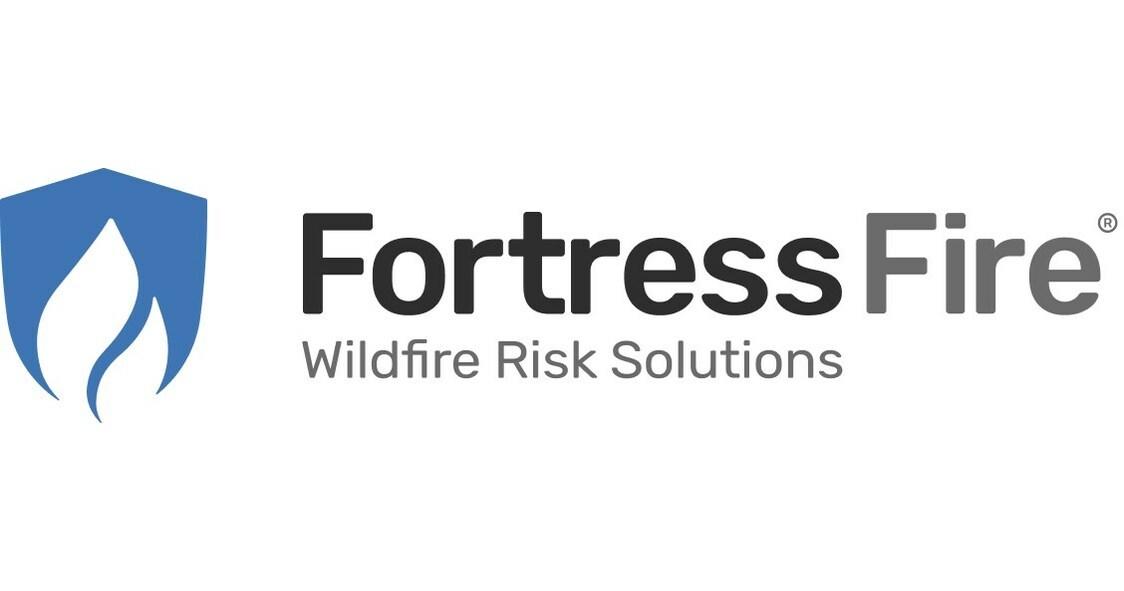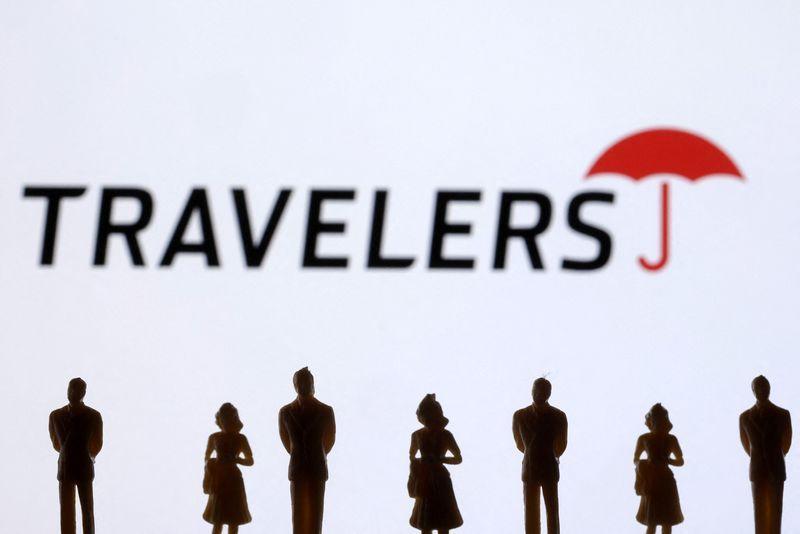Commentary/Opinion

A Thought Experiment: Imagine a Zombie Apocalypse | Insurance Thought Leadership
In these turbulent times, it's important to prepare by considering a wide range of scenarios, even ones that strain credulity.
While on vacation last week at the Jersey shore, my mind wandered far afield. Perhaps because my daughters repeatedly urged me to watch "Sinners," my thinking ranged to vampires and then zombies.
Eventually, my mental meandering resolved itself into a renewed belief in the importance of scenario planning, especially in these unpredictable times, and the insurance industry should absolutely be preparing for a whole range of possibilities.
Let's start with the one that amused me as I sat on the beach: the possibility of a zombie apocalypse.
A key issue: Are those who get infected by the hordes of zombies dead or merely "undead"?
As I understand zombie lore, the decision could go either way. Zombies don't show any brain activity and have no heartbeat. Yet they still have their physical bodies, and they still function — in that straight-armed, "I'm coming to eat your brain" kind of way.
Life insurers would have to come to a decision and be prepared to defend it.
If zombies are considered to be "undead," all sorts of other types of insurance kick in. Zombies decay //and are known to lose limbs, so there could be lots of disability claims, for instance.
There would be auto accidents galore, as people fled.
Paul Carroll, Editor-in-Chief, Insurance Thought Leadership
News
Major insurance company accused of illegal scheme to profit off policyholders: 'Race to the bottom'
California homeowners are suing the state's largest home insurer, claiming that the firm misled them and left them "grossly underinsured" as aggressive and unprecedented wildfires devastated much of Los Angeles, the San Francisco Chronicle reported.
What's happening?
On January 7, what would become a historical series of wildfires began burning in the Pacific Palisades neighborhood.
Within a day, the blaze had consumed several homes. It wasn't fully extinguished until January 31, leaving a trail of destruction and fatalities in its wake. On January 9, NPR questioned whether insurance companies had "enough money" to cover the slew of upcoming claims.
State Farm is the largest insurer in California, and on January 10, Newsweek covered a statement issued by the insurer. Although the language has since changed, an archived copy matched what was quoted in the article.
"We are here for our customers to help begin the process of recovery," it read in part. "We want our customers to know that, when it is safe to do so, they can and should file a claim."
In June, several California policyholders jointly filed suit against State Farm, alleging that the firm intentionally and "grossly" left them underinsured.
Plaintiffs further alleged the company engaged in a "multifaceted illegal scheme," designed to "reap enormous illicit profits by deceptively misleading over a million homeowners," per the complaint.
Tesla’s auto insurance arm hit with consumer class action in California | Reuters
Electric vehicle maker Tesla's (TSLA.O), opens new tab auto insurance unit has been hit with a consumer lawsuit in California accusing it of deliberately scheming to delay and minimize insurance payouts, causing some motorists to abandon claims or pay out of pocket.
The proposed class action filed in the Los Angeles Superior Court on July 11 alleged Tesla Insurance failed to implement and maintain sufficient claims-handling procedures for its customers.
Tesla, led by billionaire entrepreneur Elon Musk, offers insurance policies in California to Tesla drivers and also to drivers of non-Tesla vehicles. The lawsuit, opens new tab, which seeks unspecified monetary damages, alleges Tesla violated California’s unfair competition law and seeks to represent potentially thousands of motorists in California who had bought insurance from the company.
Tesla and a lawyer for the named plaintiff did not immediately respond to requests for comment. Tesla launched its auto insurance unit in 2019, promising what Musk at the time called a “vastly better” service than rival providers.
A Reuters investigation in 2023 showed a raft of consumer complaints about Tesla's insurance claims processing, and also scrutiny from state regulators. The Ohio Department of Insurance at least twice in 2023 found Tesla had violated state regulations for claims handling, including for a lack of timely communications with a policyholder.
Telematics, Driving & Insurance

Maryland sees steady growth in telematics use but concerns over transparency persist - report
Auto insurers in Maryland are expanding their use of telematics programs, but regulators say a lack of transparency continues to raise questions about how these tools affect consumer premiums.
As per a report by the Maryland Insurance Administration, the number of policies using telematics in the state increased 45.5% from 2021 to 2023. While still a minority of the market, Insurance Commissioner Marie Grant said the growth reflects broader adoption by carriers and rising consumer awareness.
“Consumers often take advantage of these programs because they think that it will result in a more accurate measure of their risk and that they may see premium decreases,” Grant said, as quoted by Best Wire.
The results, however, are mixed. In 2023, 30% of enrolled policyholders saw their premiums decrease, 45% saw no change, and 23.6% experienced a rate increase. Grant said the distribution of rate outcomes will be closely monitored and emphasized the need for consumers to clearly understand how their behavior affects pricing.
InsurTech/M&A/Finance💰/Collaboration

Canadian insurtech Quandri secures US$12 million in funding | Insurance Business Canada
The Vancouver firm is building out new offices and teams as demand grows for its tools
Quandri, a Canadian artificial intelligence platform focused on automating servicing work for insurance brokerages and agencies, has raised US$12 million in new funding.
The latest round brings the company’s total capital raised to more than US$20 million since its founding in 2021.
Framework Venture Partners led the round, with continued support from existing investors FUSE and Defined Capital. Intact Ventures, the strategic investment arm of property and casualty insurer Intact Financial Corporation, also joined as a new investor.
The Vancouver-based company said the funds will be used to expand operations in Canada and the United States, grow its engineering and AI teams, and accelerate go-to-market initiatives.
Climate/Resilience/Sustainability

Wildfires Break Seasonal Patterns as LA Fires to Cost Insurers a Record $40 Billion
Year-round fire threat forces industry to rethink risk management as climate change and urban sprawl drive unprecedented losses, Gallagher reports.
Wildfires are now occurring throughout the year rather than just during traditional summer months, with January 2025’s Los Angeles fires expected to generate $40 billion in insurance claims—making it the costliest wildfire event for the insurance sector to date, according to a report from Gallagher.
The traditional understanding of wildfire seasonality has fundamentally changed, with destructive fires now occurring across all months of the year in the northern hemisphere. January’s California fires, fueled by Santa Ana winds and extremely dry conditions, claimed 30 lives and destroyed more than 16,000 structures across 56,834 acres, according to the report. Similarly, March fires in South Korea killed 32 people and burned 256,989 acres in just one week, with attribution studies showing these events were twice as likely due to climate change.
“Seeing such significant fires during winter is certainly abnormal,” said Steve Bowen, chief science officer at Gallagher Re. “We’re facing a new reality regarding the seasonality of wildfires.”
Since 2015, the U.S. has recorded more than $111 billion in direct economic damages from wildfires, with 15 of the 19 billion-dollar wildfire events occurring in the last decade, Gallagher said. The phenomenon of “weather whiplash”—wet periods promoting vegetation growth followed by extreme dry conditions—has become a key driver, with the La Niña weather pattern increasing the likelihood of extreme wildfire weather by approximately 75%.

FortressFire Presents Breakthrough Wildfire Loss Prevention Approach to Insurance Lawmakers at NCOIL Summer Meeting in Chicago
FortressFire®, a leading provider of wildfire analytics and property-specific wildfire risk management services, will present its innovative model for ignition prevention and loss mitigation at the upcoming National Council of Insurance Legislators (NCOIL) Summer Meeting on July 18 from 1:30 to 3 p.m. CDT in Chicago.
Michael O'Dell, FortressFire's head of machine learning and data science, will share FortressFire's technology foundation, proof points and actionable insights with NCOIL member legislators. The session will also feature briefings from Stanford Law School's Environmental and Natural Resources Law & Policy Program, the American Property and Casualty Insurance Association (APCIA) and the National Association of Mutual Insurance Companies (NAMIC). A question-and-answer period will follow.
"The best risk management is ignition prevention," said O'Dell. "A decade ago, we did not have the data, models or computing capacity to accurately do what FortressFire now does with precision and accuracy. Our physics-based approach goes beyond probability to help property owners, insurers and lenders understand whether a specific structure will ignite and how to prevent the ignition."
Financial Results

Insurance bellwether Travelers beats profit estimates on stronger underwriting
Property and casualty insurance giant Travelers Companies trounced Wall Street estimates for second-quarter profit on Thursday, driven by stronger underwriting and higher investment returns.
Shares of the company, whose earnings often serve as a bellwether for the sector as well as broader underwriting trends, rose 3% and it was the biggest gainer on the Dow Jones Industrial Average index. The results highlight the appeal of businesses relatively insulated from tariff shocks at a time when shifting U.S. trade policy under President Donald Trump has been the top concern for many investors.
Despite the economic uncertainty, businesses and individuals have maintained or increased insurance coverage to protect against financial risks, natural disasters and other potential losses.
"We really haven't seen any impact of tariffs across any of our businesses, certainly not in any meaningful way," Travelers CEO Alan Schnitzer said. Net written premiums, the total value of policies sold after accounting for reinsurance, rose 4% in the second quarter to $11.5 billion.
The underlying combined ratio came in at 84.7% in the quarter. A ratio below 100 indicates that the insurer collected more in premiums than it paid out in claims and expenses.
Predict & Prevent
Risk & Insurance - From Reactive to Proactive
For generations, workplace safety has been playing defense, always one step behind the next injury, the next near miss, the next preventable disaster. That’s finally changing, thanks to technology that provides safety professionals with something they’ve never had before: The ability to see problems coming and fix them before they result in a claim.
A recent conversation with Gabriel Glynn, CEO of MakuSafe, crystallized for me how these tools enable us to move beyond a "wait and see" approach to workplace safety efforts that has dominated for decades.
Glynn shared a story that hit home immediately. His father, a safety director responsible for 2,000 workers, described his job as "waiting for something bad to happen, figuring out why, then putting a plan in place so it doesn’t happen again."
Glynn asked how his father knew if his plan would be effective and was told he would have to wait to see if fewer people got hurt the next year doing the same thing.
Today’s technology flips this equation. Wearable sensors, environmental monitoring systems, AI-powered analytics, and machine learning algorithms are creating unprecedented visibility into workplace conditions that create the opportunity to fix a risky situation before it becomes a workplace casualty.
Today

A Look at P&C in the Rearview Mirror
Reviewing our predictions for 2025 provides insights into industry progress on empathy, transparency, AI, claims and much more.
It's been a wild and bewildering few years in our industry, and almost everything seems to be in flux. Leaders are seeking some reliable sense of what to expect so they can strategize and plan effectively.
Three consecutive years of rate increases have taken a toll on consumers and businesses but have achieved the desired goal of profitability -- at least for now, as insured losses from catastrophe events across the globe in the first half of 2025 increased to almost $100 billion, which marks the second highest recorded after 2011's $140 billion, according to an Aon report. These figures are up from $71 billion in H1 2024 and are threatening, especially as hurricane season has yet to peak.
Lately, industry colleagues and client inquiries are shifting from product design and market entry to more strategic planning. Meanwhile, insurtech funding is rebounding with renewed urgency and excitement for all things AI, but also testing more recently adopted investor parameters, established after years of excesses.
What follows is an executive level review of our thought leadership articles (all of which can be accessed at Insurance and InsurTech Blog) published over the past few months, mined for insights. It turns out the majority of the trends we have identified and illuminated are emerging.
There are other noteworthy developments, too, such as Progressive claiming the No. 1 spot in market share, unseating State Farm. The most-talked-about new insurance/insurtech entrants—Root, Lemonade and Hippo—have survived, evolved or thrived despite declarations of their demise. And, let's not overlook a milestone, as P&C reached $1 trillion in written premiums for the first time.
Looking back at some of 2025 predictions, we note that Predict & Prevent continues to gain traction. The electrical detection, fire prevention solution by Ting is a shining example. Advances in leak detection and water shut-off along with workplace injury avoidance are also highlights. Legal abuse centered on litigation financing is finally getting more attention; record-setting verdicts are adding pressure, on top of weather risk. Finally, there is anticipation of greater M&A activity.
And 2025 is just the halfway point of the decade. So remain buckled in and stay tuned.
Fraud

Allstate sues to recover $842k over alleged no-fault fraud
Allstate claims five New York clinics submitted hundreds of sham medical bills under no-fault policies
Allstate wants its $842,000 back, claiming a group of New York clinics defrauded the insurer through improper no-fault medical billing.
In a lawsuit filed July 10 in the US District Court for the Eastern District of New York, Allstate Insurance Company and several affiliates allege that five professional corporations submitted fraudulent claims for chiropractic, physical therapy, and acupuncture services. According to the complaint, these clinics were nominally owned by licensed providers but were actually controlled by David Safir, a layperson who is not licensed to operate healthcare businesses in New York.
Allstate alleges that under New York law, this arrangement made the clinics ineligible to collect under the state’s no-fault auto insurance system, which only permits licensed professionals to control billing entities. The insurer claims Safir directed operations - including hiring, billing, and treatment protocols - while using contracts with management and billing companies to conceal his role.
The entities named in the suit are Four Square Physical Therapy, Active Motion Chiropractic, Roosevelt Family Chiropractic, Brown Stone Acupuncture, and Fulton Street Acupuncture. Allstate claims the clinics operated from three locations in Queens: one in Richmond Hill and two on Queens Boulevard in Flushing. The company describes them as “mirror-image” entities providing overlapping services, with nearly identical structures and processes.
Awards
CNBC Names One Inc Among Top 300 Global Fintech Companies for Second Year in a Row
Recognition spotlights firms at the forefront of digital transformation in Payments
One Inc, the leading digital payments network for the insurance industry, today announced it has been named to CNBC’s Top 300 Global Fintech Companies list for the second consecutive year. One Inc was recognized in the Payments category, which honors companies that are redefining how businesses and consumers conduct digital transactions.
This honor highlights One Inc’s continued leadership in delivering modern, insurance-specific payment solutions that drive innovation and efficiency across the insurance industry. Compiled in partnership with Statista Inc., this annual ranking recognizes the most forward-thinking and impactful fintech companies shaping the future of financial services.
“We’re incredibly proud to be recognized by CNBC for the second year in a row, which is a clear testament to our team’s dedication and outstanding work in transforming the insurance industry through innovation and technology,” said Ian Drysdale, CEO of One Inc. “This honor strongly validates our ongoing commitment to modernizing insurance payments, made possible through the trust and collaboration of our insurers and partners who have been instrumental in our growth and success. As the industry rapidly evolves, our unified platform continues to deliver the innovation, security, and scalability insurers need to stay competitive and address the changing needs of policyholders.”
